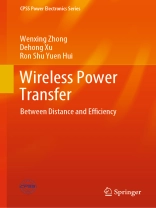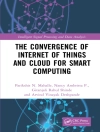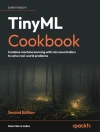Focusing on inductive wireless power transfer (WPT), which relies on coil resonators and power converters, this book begins by providing the background and basic theories of WPT, which are essential for newcomers to the field. Then two major challenges of WPT – power transfer distance and efficiency – are subsequently addressed, and multi-resonator WPT systems, which not only offer a way to extend power transfer distance but also provide more flexibility, are investigated. Recent findings on techniques to maximize the power transfer efficiency of WPT systems, e.g. maximum efficiency point tracking, are also introduced. Without the constraint of cables, wireless power transfer (WPT) is an elegant technique for charging or powering a range of electrical devices, e.g. electric vehicles, mobile phones, artificial hearts, etc. Given its depth of coverage, the book can serve as a technical guideline or reference guide for engineers and researchers working on WPT.
Inhaltsverzeichnis
Introduction of WPT.- Application of WPT.- Basic Theories.- General Modeling of Multi-Resonator WPT Systems.- Straight Domino-Resonator WPT.- Circular Domino-Resonator WPT.- Optimization of Dual-Receiver System.- Designing a Three-Coil System.- Designing a Dual-Frequency Dual-Receiver System.- Introduction on Maximizing WPT Efficiency.- Maximum Efficiency Point Tracking.- Using On-Off Keying Modulation for Impedance Transformation.- Designing a Reconfigurable WPT System.- Designing a Charging Time Control WPT System.
Über den Autor
Wenxing Zhong: Since 2010, he has worked on wireless power transfer and pioneered the research on maximum efficiency point tracking technique which is essential for wireless power transfer systems. He has coauthored 32 technical papers including 17 refereed journal papers and held 3 US patents. In 2015 and 2016, he received two Transaction First Prize Paper Awards from the IEEE Power Electronics Society. In 2018, he was recruited by ‚the Thousand Young Talents Plan‘ of the Chinese Central Government.Dehong Xu: Since 1996, he has been with the College of Electrical Engineering, Zhejiang University, China, as a Full Professor. He was a Visiting Scholar at the University of Tokyo, Japan from 1995 to 1996. From June to December 2000, he was a Visiting Professor at the CPES of Virginia Tech, USA. From February 2006 to April 2006, he was a Visiting Professor at the ETH, Switzerland. His current research interests include power electronics topology and control, power conversion for energy saving, and renewable energy. He has authored or coauthored six books and more than 160 IEEE Journal and Conference papers. He holds more than 30 Chinese patents and 3 US patents. Dr. Xu is the recipient of four IEEE journal or conference paper awards. Since 2013, he has been the President of the China Power Supply Society. He was an At-Large Adcom Member of the IEEE Power Electronics Society from 2017 to 2019. He is an Associate Editor of IEEE Transactions on Power Electronics. He was the IEEE PELS Distinguish Lecturer in 2015–2017 and received the IEEE PELS R. D. Middlebrook Achievement Award in 2016.
Ron Shu Yuen Hui: He is the holder of the Philip Wong Wilson Wong Chair Professorship at the University of Hong Kong. Since July 2010, he has concurrently held a part-time Chair Professorship of Power Electronics at Imperial College London. He has published over 200 technical papers, including more than 170 refereed journal publications and book chapters. Over 55 of his patents have been adopted by industry. He is an Associate Editor of IEEE Transactions on Power Electronics and IEEE Transactions on Industrial Electronics. In 2010, he received the IEEE Rudolf Chope R&D Award from the IEEE Industrial Electronics Society, the IET Achievement Medal (The Crompton Medal), and was elected to the Fellowship of the Australian Academy of Technological Sciences & Engineering. He is the recipient of the 2015 IEEE William E. Newell Power Electronics Award.












